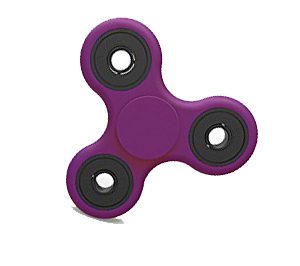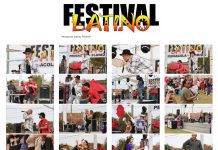Los asientos flexibles ayudan a los estudiantes a manejar un movimiento excesivo
Por Brandy Allport, Center for Research and Economic Opportunity at the University of West Florida

PENSACOLA, Fla.— Scotti Mason sirve como entrenadora de comportamiento en Brentwood Elementary School en Pensacola. Ella ha observado que los estudiantes a quienes se les permite moverse en clase son más propensos a concentrarse en lo que el maestro está diciendo y haciendo que aquellos a quienes se les anima a quedarse quietos sin moverse. “Es sentido común, si lo piensas,” dijo Mason. “Como adultos tenemos que sentarnos en reuniones, y a la mayoría de nosotros nos resulta difícil sentarnos quietos después de cierto tiempo. ¿Por qué deberíamos esperar que los niños lo hagan?
“A veces, como parte de sus planes de manejo del comportamiento para algunos estudiantes que están teniendo dificultades para concentrarse en clase, Mason recomienda asientos flexibles. En vez de las sillas tradicionales, los estudiantes se sientan en una pelota de ejercicio que rebota ligeramente o en un taburete que oscile de lado a lado.
Mason también tiene un alijo de herramientas de mano llamadas “fidgets.” Estos dispositivos están diseñados para ser manipulados, parecido a las pelotas de estrés que se usan en adultos. Las variaciones incluyen una serie de bloques entrelazados que pueden ser dados torcidos y sobredimensionados que tienen botones en ellos que pueden ser empujados o girados.
“Los Fidgets no son juguetes,” dijo Mason. “Hay que enseñarle a los estudiantes a usarlos de manera responsable. No todos los fidgets funcionan para cada estudiante, pero hemos visto algunos resultados asombrosos.”
Mason dijo que en su experiencia trabajando con estudiantes y maestros para manejar las intervenciones en el salón de clases, los estudiantes a quienes se les permite mover un poco son menos propensos a agitarse y tienen más probabilidades de involucrarse con el maestro. Mason recibió una maestría de la University of West Florida en el año 2012. Su licenciatura es en el liderazgo educativo y la tecnología de instrucción. Mason dijo que todo tipo de comportamiento puede ser aliviado por medio del fidgeting.
El Fidgeting reemplaza el golpeteo repetitivo con una forma de movimiento aceptable, ya sea un suave balanceo en un asiento flexible o la manipulación de una de las herramientas de mano de fidget.
“Usted notará que los estudiantes mantendrán la inquietud y tendrán sus ojos en el maestro. No necesitan mirar hacia abajo al fidget,” dijo Mason. Jessica Haupt, maestra de matemáticas y ciencias de cuarto grado en Brentwood, quien también es graduada de la UWF, ha acogido la idea de asientos flexibles en su salón de clases. Todos los 21 asientos son o una pelota de ejercicio, un taburete tambaleante, o un taburete con bandas flexibles unidas. Los estudiantes enganchan sus pies en las bandas y usan sus pies para hacer que las bandas se estiren o reboten.
“Es un paso en el futuro educativo,” dijo Haupt. “Los asientos flexibles permiten a los estudiantes liberar energía y concentrarse en su trabajo. Es un ajuste para los ojos. Usted puede ver que los estudiantes están moviendo sus piernas, pero siguen en la tarea. ” Haupt ha tenido el asiento flexible en su aula desde diciembre.
“A principios de año había tres o cuatro estudiantes que se movían tanto que querían sentarse en el suelo todo el tiempo. Con el asiento flexible, eso no sucede más. Además, no he tenido ningún estudiante que se levante y pasee por la habitación. El asiento flexible les ofrece una forma aceptable de moverse un poco.”
Mason no se sorprende de los resultados reportados por Haupt en su aula.
“Los maestros aquí siempre están dispuestos a probar cosas nuevas,” dijo Mason. “Se trata de lo que encaja con el estilo de aprendizaje de un estudiante en particular, y el asiento flexible da a los estudiantes que sienten la necesidad de moverse una oportunidad para permanecer comprometidos e involucrados.”
Brentwood tiene 561 estudiantes en los grados desde kínder hasta quinto. En este momento, sólo hay dos aulas que están totalmente configurados para asientos flexibles. Mason está tratando de cambiar eso. Ella comenzó un esfuerzo de recaudación de fondos en línea en un sitio llamado donorschoose.org. Los ingresos de la recaudación de fondos se utilizarán para comprar asientos flexibles y fidgets para el mayor número de estudiantes posible para usar en la escuela.
“Mis estudiantes necesitan un refuerzo positivo y una manera de mantenerse enfocados al permitir que se muevan e inquieten,” escribe Mason en la introducción a su sitio web de recaudación de fondos.
Flexible Seating Helps Students Handle Excessive Movement
By Brandy Allport, Center for Research and Economic Opportunity at the University of West Florida
PENSACOLA, Fla.—Scotti Mason serves as the behavior coach at Brentwood Elementary School in Pensacola. She has observed that students who are allowed to fidget in class are more likely to concentrate on what the teacher is saying and doing than those who are encouraged to sit still without moving.
“It’s common sense, if you think about it,” Mason said. “As adults we have to sit in meetings, and most of us find it hard to sit still after a certain amount of time. Why should we expect kids to do it?”
Sometimes, as part of her behavior management plans for some students who are having a hard time concentrating in class, Mason recommends flexible seating. Instead of traditional chairs, students sit on an exercise ball that bounces slightly or on a stool that wobbles from side to side.
Mason also has a stash of hand-held tools called “fidgets.” These devices are designed to be manipulated, sort of like stress balls are used for adults. Variations include a series of interlocking blocks that can be twisted and oversized dice that have buttons on them that can be pushed or turned.
“Fidgets are not toys,” Mason said. “Students have to be taught how to use them responsibly. Not every fidget works for every student, but we have seen some amazing results. ”
Mason said that in her experience working with students and teachers to manage interventions in the classroom, students who are allowed to move a little bit are less likely to get agitated and more likely to engage with the teacher.
Mason received a master’s degree from the University of West Florida in 2012. Her degree is in educational leadership and instructional technology. Mason said that all kinds of behavior can be alleviated by fidgeting.
Fidgeting replaces repetitive tapping with an acceptable form of movement, either a gentle swaying in a flexible seat or the manipulation of one of the hand-held fidget tools.
“You’ll notice that the students will hold the fidget and have their eyes on the teacher. They don’t need to look down at the fidget,” Mason said.
Jessica Haupt, a fourth-grade math and science teacher at Brentwood, who is also a UWF graduate, has embraced the idea of flexible seating in her classroom. All 21 seats are either an exercise ball, a wobbling stool, or a stool with flexible bands attached. Students hook their feet into the bands and use their feet to make the bands stretch or bounce.
“It’s a step in the educational future,” Haupt said. “Flexible seating allows the students to release energy and focus on their work. It is an adjustment for the eyes. You can see that students are moving their legs, but they remain on task.”
Haupt has had the flexible seating in her classroom since December.
“At the beginning of the year there were three or four students who wiggled so much they wanted to sit on the floor all the time. With the flexible seating, that does not happen anymore. Also, I have not had any students get up and wander around the room. The flexible seating offers them an acceptable way to move around a little bit.”
Mason is not surprised by the results Haupt reports in her classroom.
“The teachers here are always willing to try new things,” Mason said. “It’s all about what fits the learning style of a particular student, and flexible seating gives students who feel the need to move a chance to remain engaged and involved.”
Brentwood has 561 students in grades kindergarten through five. Right now, there are only two classrooms that are totally set up for flexible seating. Mason is trying to change that. She started an online fundraising effort at a site called donorschoose.org. Proceeds from the fundraiser are to be used to buy flexible seating and fidgets for as many students as possible to use at the school.
“My students need positive reinforcement and a way to stay focused by being allowed to move and fidget,” writes Mason in the introduction to her fundraising website.

















